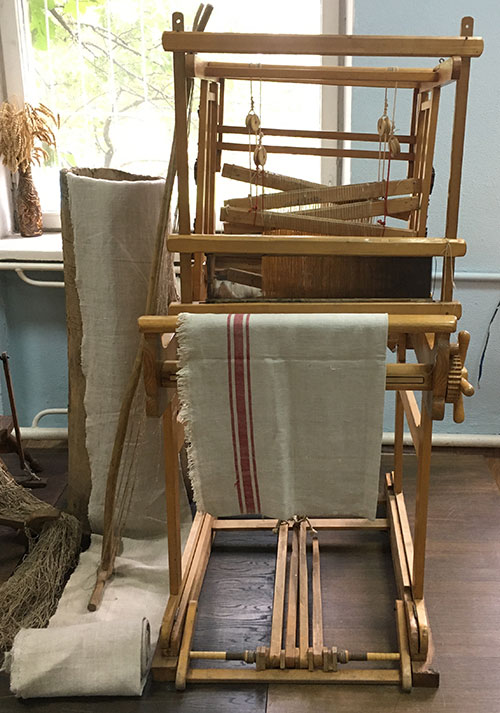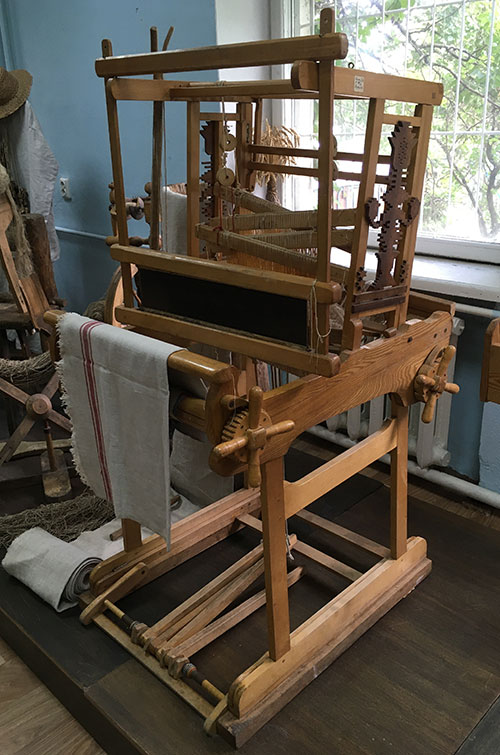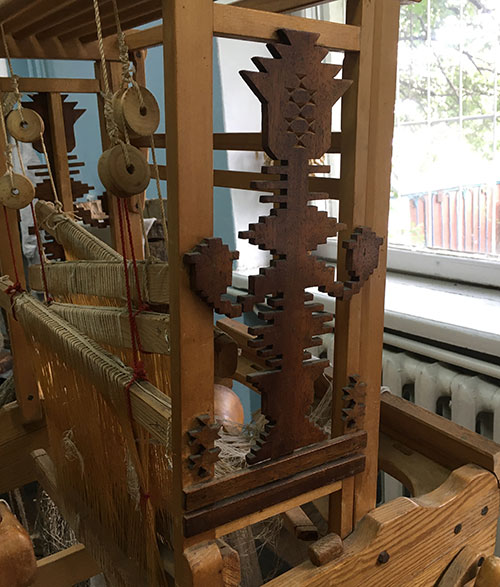 Our ancestors, no matter in what part of the world they lived, used different weaving looms to produce the fabric and make clothes from it. There is a big variety of looms that existed throughout human history – backstrap looms, vertical warp-weighted looms, drawlooms, horizontal four-post looms, pegged looms, pit looms, etc. Various constructions of looms were popular in different regions, time periods, cultures, etc. Today, we’ll take a closer look at the horizontal floor loom, one of the most widespread devices used in the 17th – early 20th century.
Our ancestors, no matter in what part of the world they lived, used different weaving looms to produce the fabric and make clothes from it. There is a big variety of looms that existed throughout human history – backstrap looms, vertical warp-weighted looms, drawlooms, horizontal four-post looms, pegged looms, pit looms, etc. Various constructions of looms were popular in different regions, time periods, cultures, etc. Today, we’ll take a closer look at the horizontal floor loom, one of the most widespread devices used in the 17th – early 20th century.
A horizontal weaving loom is a complicated device used to make cloth. Simple floor looms were extremely widespread in the 17th-19th century. A lot of homes had one, and women often wove the fabric themselves. Industrial weaving looms were and still are used at the factories. They were invented in the early 1800s. But here, we’ll give our attention to more primitive looms popular among our ancestors.
The construction of a horizontal weaving loom can differ a bit, but the basic idea is always the same. It is a wooden or metal construction that holds the threads, from which the cloth is created. There are warp threads (the base, these threads are constantly kept under tension) and weft threads (a weaver puts them perpendicularly through the warp threads). The intertwining of warp and weft threads creates the fabric. But this process is rather long and labor-intensive when made by hand. And it needs a lot of skill to make high-quality cloth.

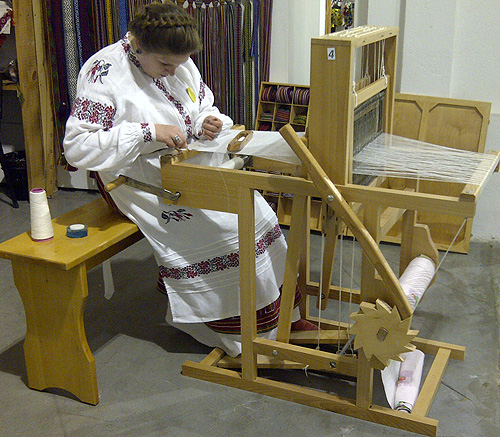
Simple modern weaving loom. Its construction is authentic but it was made in the 21st century
The width of the cloth depends on the width of the loom. Standard looms used by our ancestors produced pieces of fabric 35-55 cm (14-22 inches) wide. There were also large looms that required two people working at once to create very wide pieces of fabric. Such wide looms were used, for example, in Western European craft shops. The widest hand-woven fabric were some types of woolen cloth – up to 150 cm (60 inches) wide. But an average width of a hand-woven on a loom fabric was about 80-100 cm (30-40 inches) for wool and 50 cm (20 inches) for silk. The length of the cloth was limited as well, until our ancestors comprehended that it could be rolled after weaving and easily stored that way.
Horizontal weaving looms are comparatively complicated constructions with a lot of small detail and auxiliary tools. Weaving simple plain fabric is not very hard. But usually, people wanted their cloth to be prettier – with patterns and ornamentation. The more elaborate and complicated the pattern is, the more parts of the loom are involved.
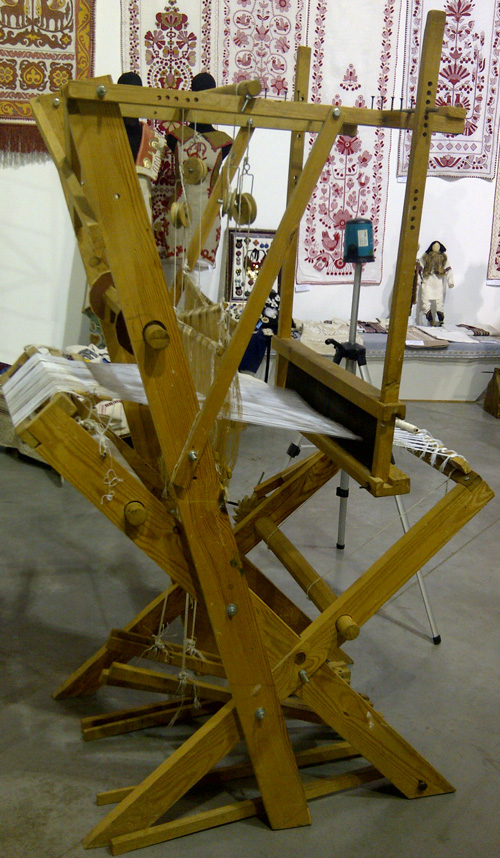
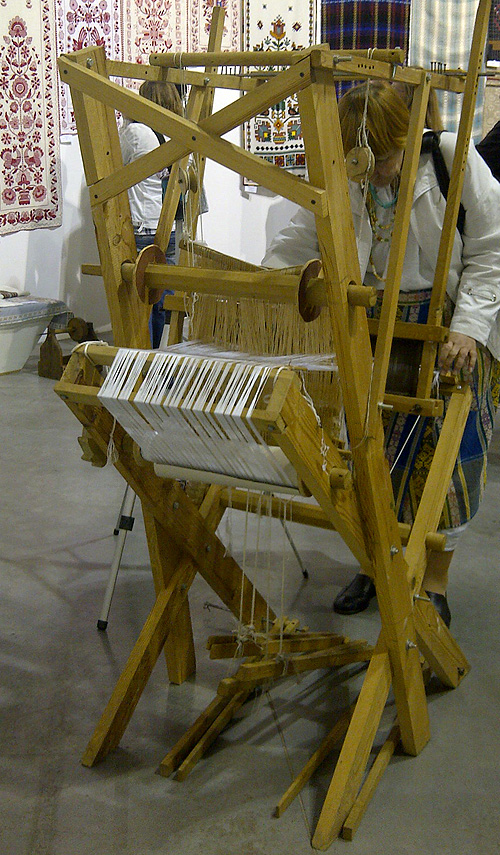
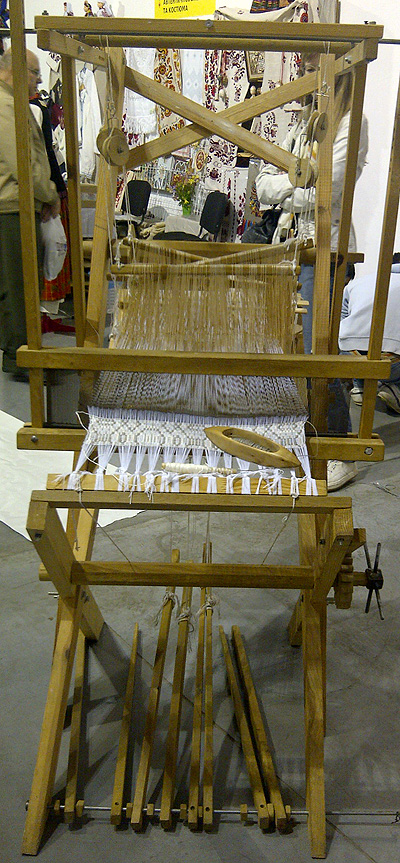
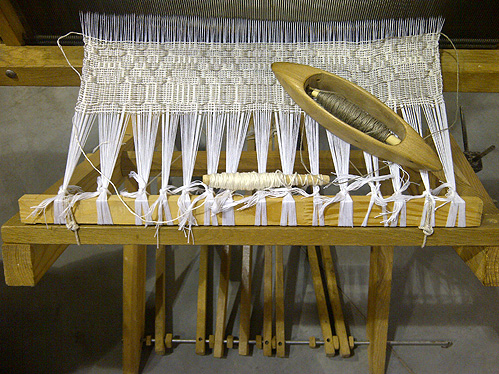
Complicated in construction and a bit clumsy-looking weaving loom. You can make comparatively narrow pieces of cloth on this loom
At first, a loom was very simple – just a few sticks and ropes. Later, a wooden frame was added to make the loom a self-sufficient device. Also, primitive weaving looms required only hands to work. But people realized that it could be optimized by letting the feet work as well, so they added foot pedals that controlled the heddles. Heddles are special parts of a loom used to separate the warp threads when a pattern is created.
Traditional Japanese weaving looms don’t have foot pedals. The artisan wears a single straw shoe attached to a rope that operates the heddles. Very creative and unusual!
Fun fact! The frames of some looms were lifted high above the ground so that a weaver stood on a platform. The majority of looms were constructed so that a weaver was standing on the ground or sitting on a stool while working. But there were also loom frames that were located almost on the ground level, for instance just about 20-30 cm above the ground. In this case, a weaver needed to dig a pit where he/she was standing during weaving. It looked a bit weird but required less wood to construct the loom.
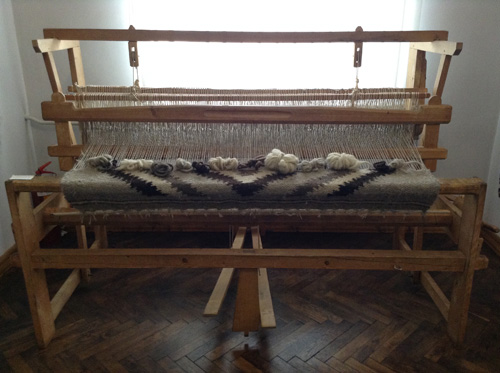


Large weaving loom for making thick woolen cloth and blankets. Carpathian Ukraine, around the 19th century
Very developed weaving looms use loom pulleys instead of simple sticks to attach the heddles. A system of pulleys allows creating complicated patterns and ornaments.
Another improvement was made to the shuttle. First shuttles were simple sticks – what can ever be simpler than that?! The weft thread or threads were wound around this stick, and a weaver put the stick through the warp threads. Later, the shape of a shuttle changed. It acquired an elongated shape and a bobbin of threads was kept inside the wooden frame. This made the process of weaving faster and easier.
Basically, this is how a weaving loom looked like until the early 20th century. We can find many samples of such looms in museums and in private ownership all over the world. The construction is very similar, with only some regional differences.
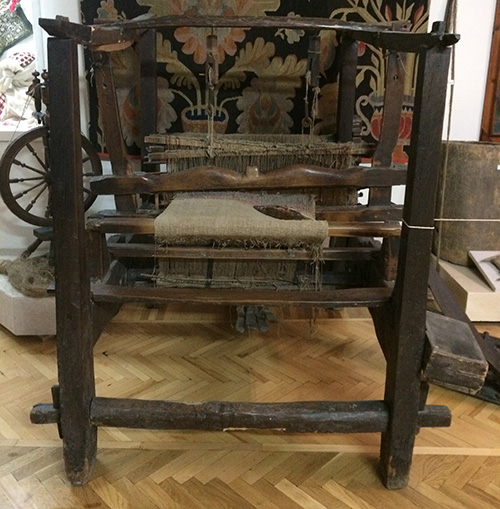
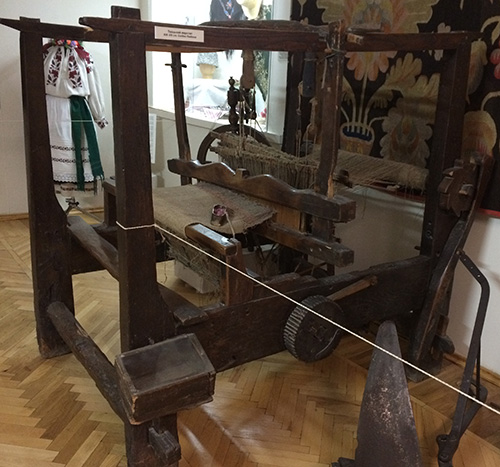
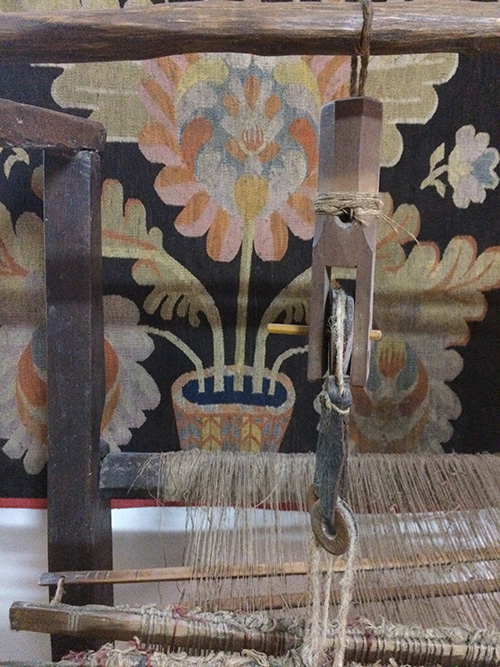
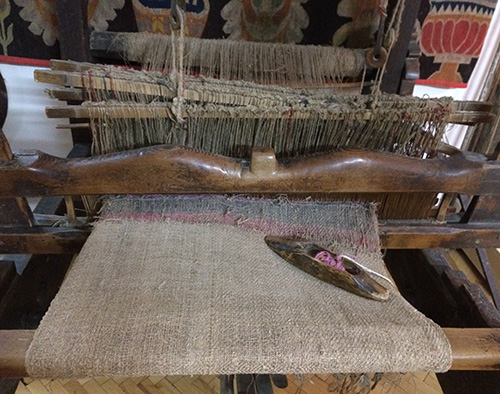

Four-post weaving loom from Central Ukraine, the 19th-20th century. You can also see a piece of simple and coarse woven cloth and a vintage flying shuttle
A skilled artisan could weave 20-30 m (65-100 feet) of fabric a day, which is a lot, considering that it’s a handicraft. But horizontal weaving looms have a significant disadvantage – it takes from 1 to 3 days to prepare the loom for weaving (to put all of the warp threads in place). And also, you need the experience to arrange the loom and to weave on it. It’s practically impossible to master a weaving loom without help.
Today, weaving looms or rather weaving machines are much more complicated than those vintage looms the artisans had at their homes. Modern industrial looms are usually computerized and programmed to achieve the best quality and speed of producing the fabric. But these modern looms are lacking the charm of authentic pieces, fully made from wood, embellished with carving, and unique.
For example, here’s a really beautiful wooden weaving loom from Ukraine. It’s a vintage device with cute decorations. This loom is exhibited in a museum.
